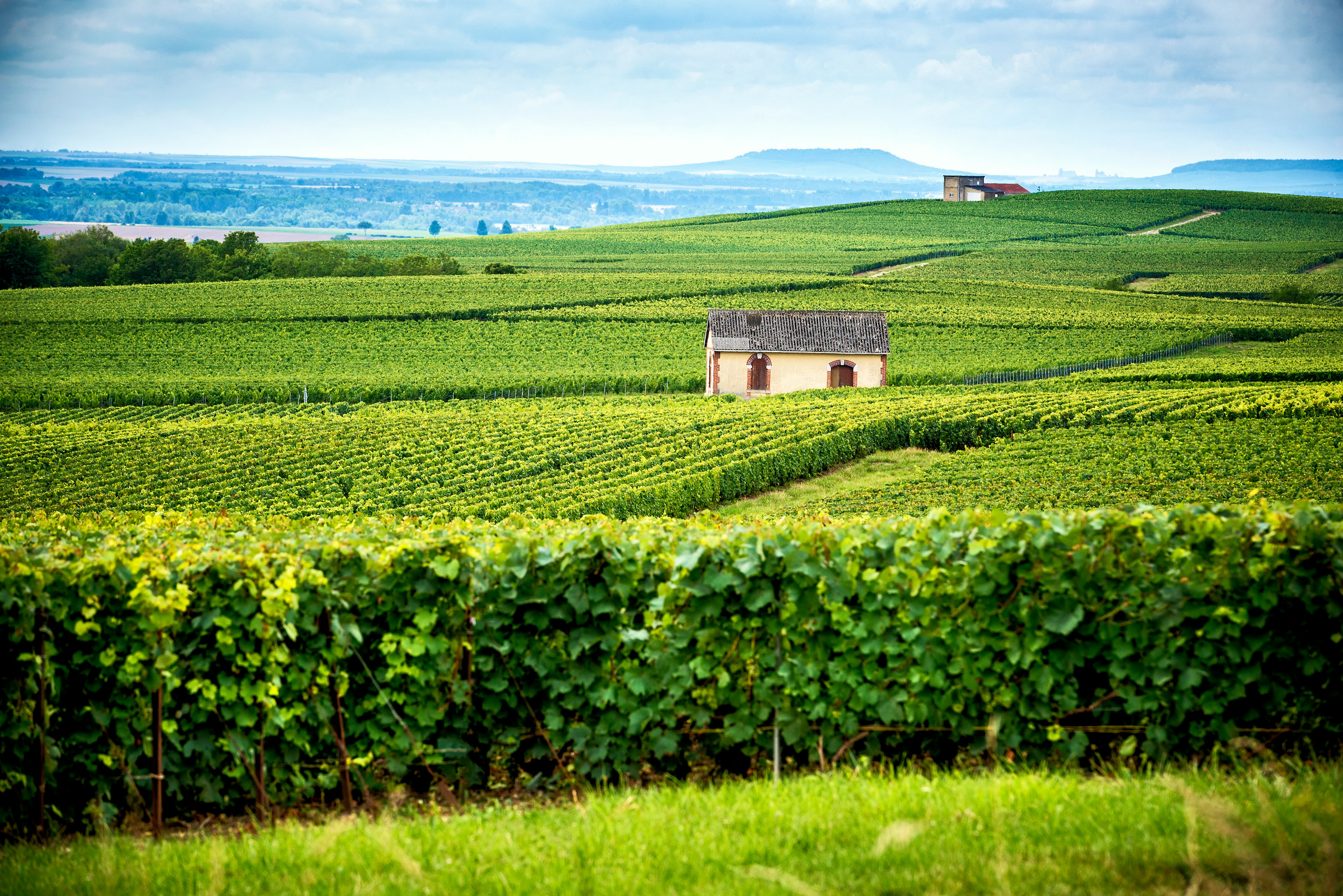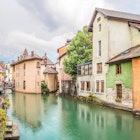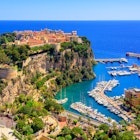
8 best things to do in France: the most unmissable experiences from Paris to Provence and beyond

May 23, 2024 • 7 min read

Embrace the serene majesty of the Hautes-Pyrenees from Gavarnie, one of France's best places to visit © Justin Paget / Getty Images
Nicola is one of the writers on the newest France guidebook. She makes tough choices to narrow down the most quintessential French experiences to help you plan an amazing trip.
Plotting a dream trip to France is not only about joining the dots between bucket list sights and places: Paris’s eyesore-to-icon tower, royally palatial Château de Versailles, medieval Carcassonne, papal Avignon, Provence’s lavender fields and jet-set St-Tropez, Normandy’s D-Day landing beaches and Impressionist portfolio en plein air…the list is long.
No, a grand tour of France befitting of the country’s Herculean history, cuisine and cultural heritage (this is, after all, the world’s most visited country, with 72.3 million annual tourists in 2023) is a unique journey into its heart and soul. It requires time and thought unraveling why cooks in the north use salted butter and those in the south, tangy olive oil. It might mean tracking down forgotten cuisine bianca ("white cuisine") in Riviera backcountry or puzzling out megalithic menhirs in Brittany and prehistoric cave art in the Dordogne. Depending which region you explore, it most definitely means mingling with Alsatians, Euskalduna or Ch’tis perhaps at an open-air market or zinc bar. In a nutshell: feel the intoxicating pulse of French art de vivre.
Whether you're traveling solo or en couple, on a multi-generational family adventure, or fun foray with girlfriends or mates: France delivers. Here are eight top things to do to weave into your trip. As the French will tell you, it’s all about savoir-faire (know how).
1. Acquaint yourself with traditional French cuisine in an old-school bistro
Pepper a city break in Paris, Marseille or Bordeaux with lunch at a traditional bistro, minted to feed workers in the 19th century. Expect tightly packed tables, old-fashioned decor and the daily menu du jour chalked on the board. Chefs take their lead from local, seasonal produce at the market – meaning asparagus and strawberries in spring, earthy game in fall and winter scallops. Die-hard bistro dishes like steak frites (steak and fries), tête de veau (rolled calf’s head), boeuf bourguignon (beef and red wine stew) and garlicky snails in their shells – unchanged for centuries – are year-round staples.
Classic bistros include Bistrot Paul Bert and L’Epi d’Or in Paris, Marseille’s Sépia, and Bordeaux’s Le Bouchon Bordelais. In famously foodie Lyon, where diehard traditional bistros are called bouchons, try mâchon – an offal-based brunch enjoyed by 18th-century silk weavers after a hard night’s work – at Le Mercière or Le Café du Peintre.
Local tip: The most authentic bistros only open for lunch and dinner weekdays; plan accordingly. Reserve a table well in advance.
The 10 best food experiences in France

2. Follow pilgrim ghosts to an ancient abbey or time-forgotten town
Be it navigating quicksand (giggles galore guaranteed!) on a hallowed trek to abbey-island Mont St-Michel, galloping a white Camargue horse across the beach in Stes-Marie de la Mer or celebrating mass at dawn with fellow hikers in Le Puy-de-Velay, emulating the original pilgrim experience is the secret to understanding France’s trove clutch of treasured pilgrim sites. Throughout the Middle Ages, noblemen paid poorer members of society to undertake pilgrimages on their behalf and it is gleaning such backstories in situ that bring Lourdes, Chartres, Mont St-Odile near Strasbourg in Alsace and dozens of stops on the French chunk of the Camino de Santiago to life.
Planning tip: Book barefoot hikes across the sand at sunrise or sunset to otherwise-rammed Mont St-Michel with accredited guides Romain Pilon or Les Traversées de Ludo.
3. Soak up French joie de vivre on a sun-drenched cafe terrace
Lounging over coffee or an apéro (aperitif) on a pavement terrace is one of France’s great sensual delights. Cornerstone of local life and prime people-watching territory, cafes range from vintage tabacs (selling newspapers, cigarettes and drinks) to fashionista hangouts with locally roasted coffee, tapas-fueled cocktails and live music after dark. Many are drenched in history: drink with the ghosts of Simone de Beauvoir, Jean-Paul Sartre and Ernest Hemingway on Place de la Contrescarpe in Paris’ Latin Quarter or with early alpinists setting off to conquer Mont Blanc in Chamonix’s art nouveau Rose du Pont.
Local tip: Cafe terraces on streets and squares around a town’s open-air or covered food market – Les Halles in Bayonne is a buzzy Basque classic – are foolproof choices for a quintessentially French, coffee-and-croissant breakfast.
4. Sand-sail on the shimmering Côte d’Opale
Harness the wind aboard a char à voile (sand yacht) to get under the salt-encrusted skin of le nord and its famous swathes of wind-whipped sand beach, white-cliff coastline and overdose of bad weather. The preposterous idea of flying down flat-sand runways on three wheels took off in northern France around 1905, and by the 1950s every self-respecting beach town had a sand-sailing club. Sign up for an initiation session in Fort Mahon-Plage in the Baie de Somme, Le Touquet on the handsome Côte d’Opale or St-Aubin-sur-Mer in Normandy.
Local tip: Warm up afterwards with a portion of frites (fries), doused in brown vinegar and wrapped in paper, from the local friterie (chippie), which you can scarf down between wind gusts on the beach.

5. Taste the world’s most famous bubbles in unsung Aÿ
It’s only fitting that champagne originates in the town where every French king was crowned, cementing its unshakeable "wine of the kings and King of Wines" pedigree. Reims’ Gothic cathedral – second only to Paris’ Notre Dame in architectural magnificence – and the town’s chalk-chiseled cellars steadfastly remain Champagne’s honeypot tourist sights. In Épernay luxurious champagne houses and 200 million-odd bottles of aging bubbly pave illustrious Avenue de Champagne. Offset this decadence with down-to-earth bike rides between vines, producer tastings and a roast chicken lunch in the tiny village of Aÿ.
6. Green your carbon footprint in the Alps or the Pyrenees
France’s spectacular kaleidoscope of natural landscapes – green valleys where time slops, razor-sharp mountain peaks and ice-blue glaciers – is ribboned with sentiers de grande randonnée (long-distance hiking trails). Tackle a short section. Deep in the French Alps, day-hike up the dizzying Tête de la Maye – rock-embedded cables and rungs assist with vertiginous sections – to gaze down on a dead-end valley in Parc National des Écrins so remote its inhabitants decamp in winter. Listen to the sublime peace.
In the Pyrenees, ride Europe’s highest open-air train to hook up with the GR10 trail. Or save your Pyrenean adventure for October when beech forests glow gold, winter’s first snow sparkles on summits and the summer crowd visiting Cirque de Gavarnie’s dramatic amphitheater of crashing waterfalls has long gone.
Local tip: Overnight in a refuge (mountain hut), shepherd’s hut or mazot (miniature alpine chalet used for storing tools or valuables). The few that remain open in winter can only be reached by snowshoe or touring ski.

7. Embrace chateau life
It’s not only about picking your jaw up from the floor in Versailles’ Hall of Mirrors, gawping at Chambord’s rooftop mirage of fancy-pants spires and chimney pots, or swooning over the leafy derivations of amour in Château de Villandry’s ornamental "Love Gardens." Romantics seeking fairytale chateaux gravitate to Renaissance France’s showpiece Loire Valley, but overtly rural regions such as the Lot, Dordogne and Languedoc squirrel away many more.
Many chateaux are rustic, grassroot properties where normal people live, work and craft. Dip into the ancestral knowledge of Médoc winegrowers on a cellar tour at Château Lynches-Bages. Learn about Burgundy’s unique UNESCO-listed climats at Château du Clos de Vougeot. Smell the angels’ share in sooty black Château de Cognac and the rare 150-year-aged cognac bottled in hand-blown glass at teeny Château de Montifaud. Indulge your ultimate French fantasy of a boozy lunch between vines at St-Émilion’s Château Troplong-Mondot or a dinner and a four-poster-bed kind of night at insanely romantic Château de la Treyne: the French directory of chateau hotel-restaurants and B&Bs is colossal.
8. Indulge in cheese-fueled fun in the Causses et Cévennes
Road-trip to the zone where the Cévennes mountains melt into the limestone Causses plateau to uncover central France’s most exhilarating natural wonder: Gorges du Tarn. Drive along the sinuous D907 balcony road, a route spectacularly wedged between overhanging rock and turquoise river, where every twist and turn casts new light on the dramatic gorge. Pick it up in the medieval village of Ste-Enimie. Pair the hair-raising drive with kayaking or canyoning and the stickiest cheese dish you’ll encounter on your entire French odyssey: aligot (cheesy mashed potato starring local tome fraiche d’Aubrac).
Detour: Drive an hour north into L’Aubrac to track down Buron de la Treille, the region’s last-remaining buron (shepherds’ stone hut) still making laguiole buron cheese. Tuck into aligot cooked up in a cauldron at buron-turned-resto Buron de l’Aubrac.
Explore related stories









